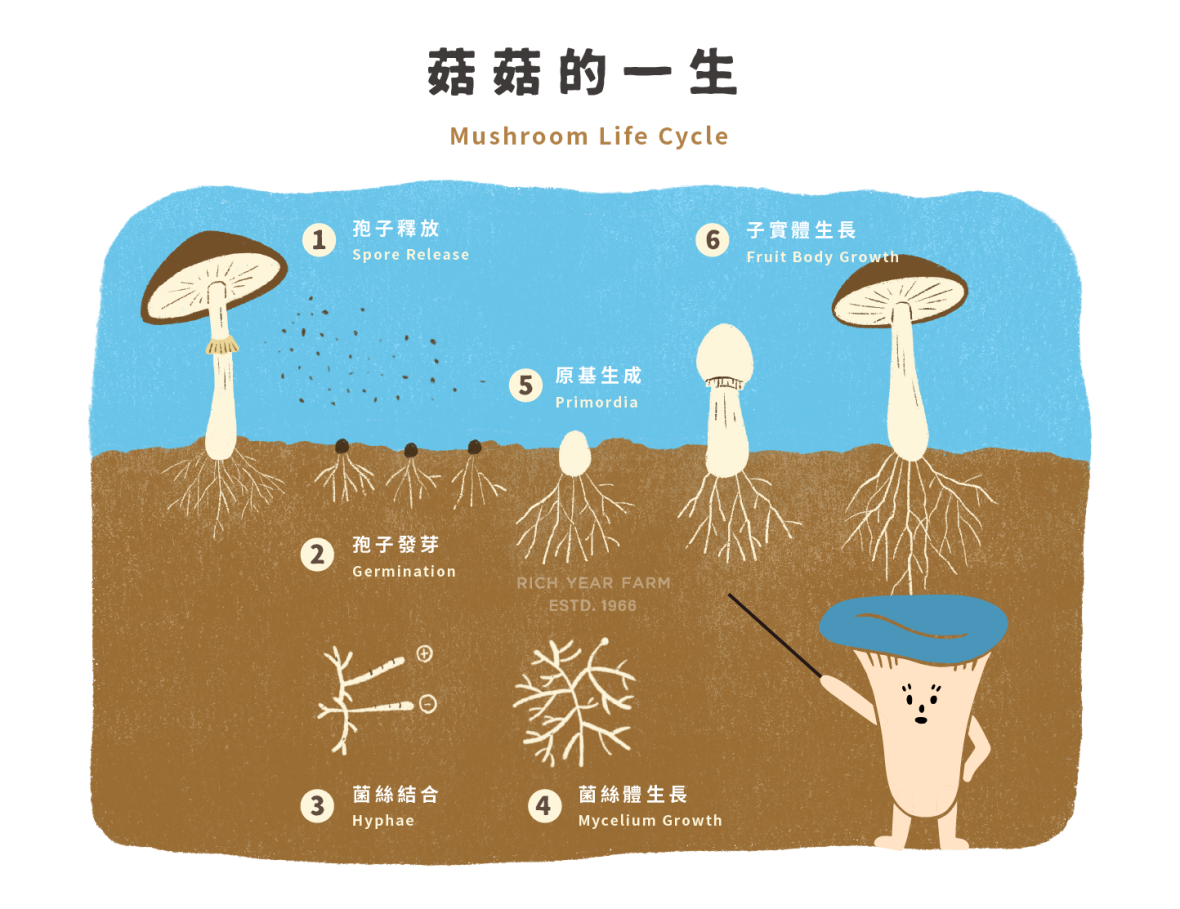Farmer's Diary
Mushroom Classroom
Mushroom Life Cycle

Fungi, such as shiitake and enoki mushrooms, represent just a small portion of the vast fungal kingdom. Most fungi grow naturally in forests rather than being artificially cultivated. Unlike plants, fungi do not contain chlorophyll and cannot produce their own nutrients. Some fungi are parasitic, living on large trees, while others are saprophytic, feeding on decaying wood. There are also rare and valuable symbiotic fungi, such as matsutake mushrooms and truffles.
Fungi reproduce through spores, which are produced on the gills beneath the mushroom cap. These spores are microscopic in size and are dispersed by the wind once mature. If they land in a suitable environment, they germinate into mycelium. Under favorable conditions, the mycelium grows rapidly, branching and intertwining to form a dense white network. As it absorbs nutrients, the mycelium continues to expand and eventually forms the visible mushroom.
Fungi have a simple yet unique structure, composed entirely of mycelium. They lack roots, stems, or other typical plant-like organs. The part of the fungus we commonly see is the fruiting body, which functions similarly to a flower in plants. For most of their life cycle, fungi exist as mycelium in the soil or on trees, only producing a fruiting body during the reproductive stage.
Fungi reproduce through spores, which are produced on the gills beneath the mushroom cap. These spores are microscopic in size and are dispersed by the wind once mature. If they land in a suitable environment, they germinate into mycelium. Under favorable conditions, the mycelium grows rapidly, branching and intertwining to form a dense white network. As it absorbs nutrients, the mycelium continues to expand and eventually forms the visible mushroom.
Fungi have a simple yet unique structure, composed entirely of mycelium. They lack roots, stems, or other typical plant-like organs. The part of the fungus we commonly see is the fruiting body, which functions similarly to a flower in plants. For most of their life cycle, fungi exist as mycelium in the soil or on trees, only producing a fruiting body during the reproductive stage.



